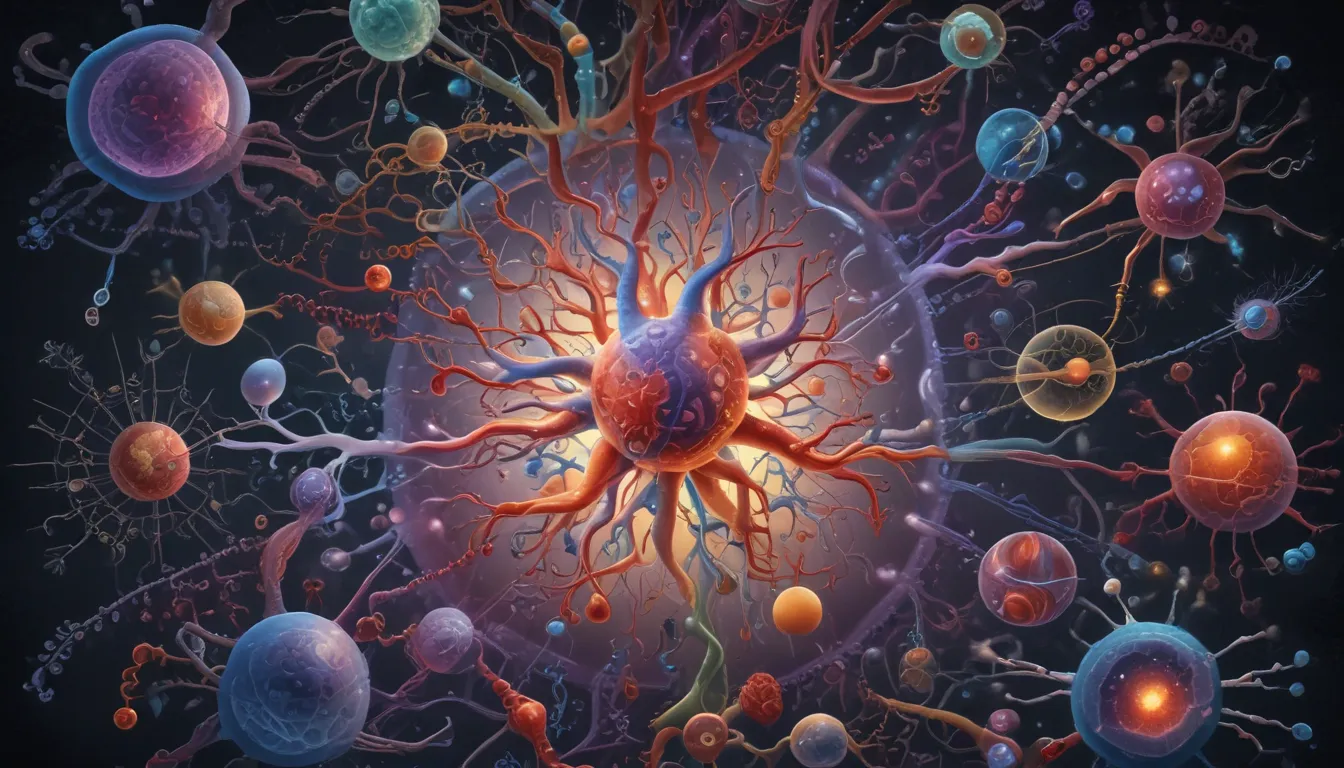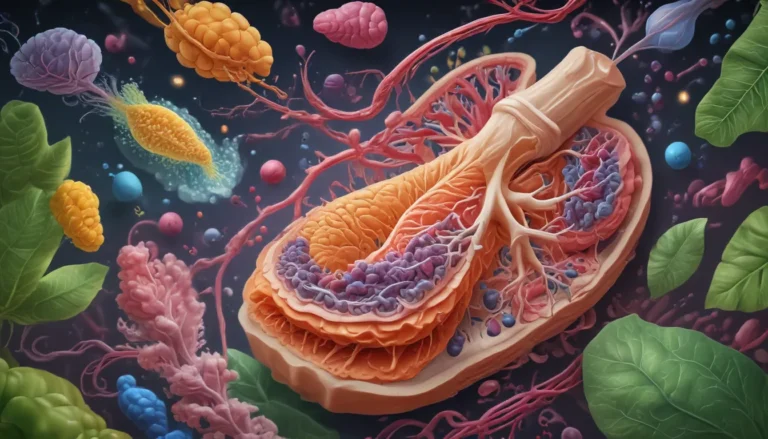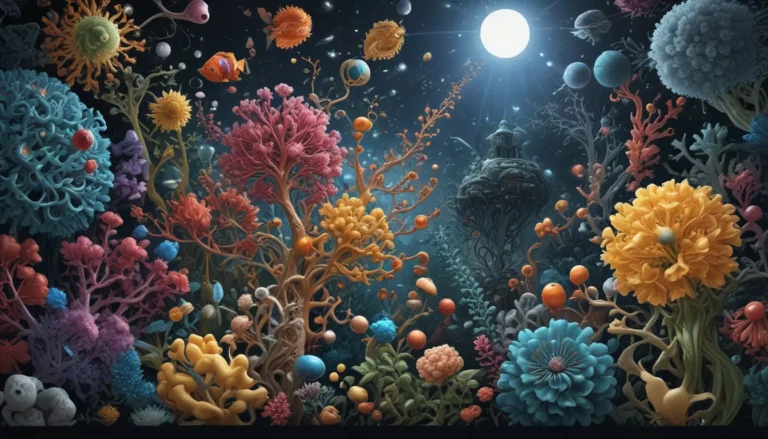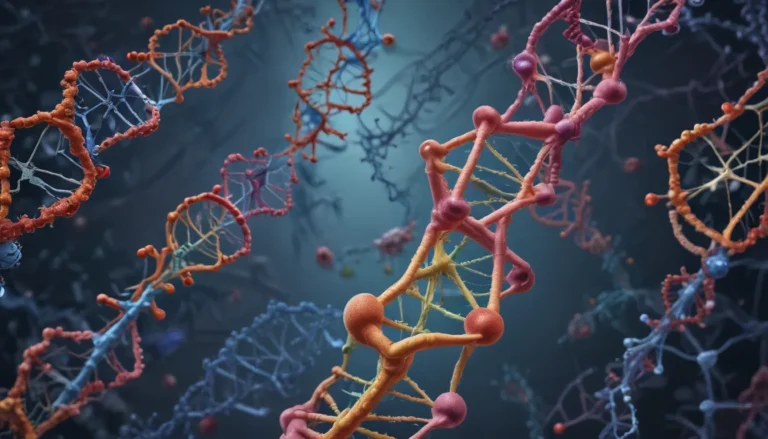A Note About Images: The images used in our articles are for illustration purposes only and may not exactly match the content. They are meant to engage readers, but the text should be relied upon for accurate information.
Hormone signaling is a captivating and vital process that intricately orchestrates numerous biological functions within the human body. From overseeing growth and development to maintaining equilibrium in various physiological systems, hormones serve as chemical messengers that convey essential information between cells and tissues. Delving into the complexities of hormone signaling not only offers profound insights into fundamental biological processes but also holds significance in the diagnosis and treatment of disorders arising from hormonal imbalances. In this comprehensive guide, we will explore 18 astonishing facts about hormone signaling that will illuminate the intricacy and beauty of the human body’s communication network. So, fasten your seatbelts and get ready to be awestruck by the remarkable realm of hormone signaling!
Key Takeaways:
- Hormone signaling controls a myriad of body functions, from growth to mood regulation. Disruptions in hormone signaling can lead to health issues like diabetes and infertility. Together, hormones form intricate networks that work harmoniously to maintain the body’s equilibrium. – With the ability to produce rapid or prolonged effects, hormones impact behavior, growth, and immune responses. They undergo fluctuations across life stages, influencing pivotal events like puberty, pregnancy, and menopause. Hormonal imbalances can have profound effects on fertility and overall well-being.
Hormonal Regulation of Biological Processes:
Hormones, chemical messengers produced by endocrine glands, play a pivotal role in transmitting signals throughout the body to regulate essential processes like growth, metabolism, reproduction, and homeostasis.
Diverse Types of Hormones and Signaling Mechanisms:
Hormones can be categorized into peptide hormones, steroid hormones, and amino acid-derived hormones, each signaling through distinct mechanisms tailored to their specific functions.
Local and Systemic Hormone Signaling:
While some hormones act locally, influencing nearby cells, others travel via the bloodstream to reach target cells located in different parts of the body, exerting systemic effects.
Dual Nature of Hormone Effects:
Hormones can manifest both immediate, rapid effects (as seen in adrenaline) and gradual, sustained effects (like growth hormone), shaping behaviors, growth patterns, and immune responses.
Agonistic and Antagonistic Actions of Hormones:
In different contexts, hormones can act as agonists, enhancing target cell activity, or antagonists, inhibiting cell function, highlighting the dynamic and versatile nature of hormone signaling.
Critical Role of Feedback Mechanisms in Hormone Regulation:
Feedback loops are instrumental in maintaining optimal hormone levels within a specified range. When levels deviate, the feedback system triggers corrective responses to restore equilibrium.
Gender-Specific Physiological Effects of Hormones:
Sex hormones such as estrogen and testosterone exert distinct effects on male and female physiology, influencing secondary sexual characteristics and reproductive functions.
Hormones and the Stress Response:
During stressful situations, hormones like cortisol are released to equip the body to cope with challenges by increasing energy levels and supressing non-essential functions.
Behavioral and Mood Modulation by Hormones:
Key hormones like serotonin and dopamine impact neurotransmitter levels in the brain, thereby influencing behaviors, moods, and emotional responses.
Influence of Hormones on Growth and Development:
Crucial hormones like growth hormone and thyroid hormones play a pivotal role in regulating proper growth and development, overseeing processes like bone growth and organ maturation.
Health Implications of Hormone Imbalances:
Disruptions in hormone production or signaling can lead to hormonal imbalances, culminating in conditions like diabetes, thyroid disorders, and infertility, underscoring the delicate balance of hormone signaling.
Interplay of Hormones in Physiological Regulation:
Hormones often collaborate within intricate networks, regulating and influencing each other’s activities to uphold overall physiological balance and functionality.
Key Players in Hormone Regulation:
The hypothalamus serves as the control center, releasing hormones that stimulate or inhibit hormone secretion from the pituitary gland, thereby controlling the release of other hormones in the body.
Therapeutic Applications of Synthetic Hormones:
Synthetic hormones like insulin and thyroid hormones are extensively utilized in medical treatments to address hormone deficiencies and imbalances.
Hormonal Regulation of Immune Responses:
Hormones like cortisol and adrenaline are pivotal in regulating the body’s immune response, inflammation, and allergic reactions, emphasizing the comprehensive role of hormones in physiological processes.
Pulsatile Release of Hormones:
Certain hormones like growth hormone and luteinizing hormone exhibit pulsatile release patterns throughout the day, with rhythmic fluctuations in their levels.
Lifelong Hormonal Changes:
Hormonal fluctuations occur across various life stages such as puberty, pregnancy, and menopause, precipitating diverse physiological and psychological transformations.
Impact of Hormonal Disruptions on Fertility:
Hormonal imbalances can disrupt reproductive processes, contributing to fertility issues in both men and women, underscoring the critical role of hormones in fertility.
In Conclusion,
Hormone signaling stands as a mesmerizing and intricate process pivotal in regulating diverse physiological functions within the body. From orchestrating growth and development to fostering homeostasis, hormones function as messengers transmitting essential signals between cells and tissues.
By unraveling the enigma of hormone signaling, scientists forge ahead in expanding our comprehension of bodily functions, paving the way for revolutionary medical breakthroughs. The exploration of hormone signaling represents an ongoing journey, brimming with opportunities to unearth more about this remarkable facet of biology.
FAQs:
- What are hormones?
-
Hormones are chemical messengers produced by endocrine glands that travel through the bloodstream to regulate various physiological processes in the body.
-
How do hormones work?
-
Hormones bind to specific receptor molecules on target cells, initiating a series of intracellular events that culminate in specific physiological responses.
-
Can hormone signaling be disrupted?
-
Yes, various factors like hormone imbalances, endocrine gland tumors, stress, and medication can disrupt hormone signaling.
-
Do hormones impact mood and behavior?
-
Yes, hormones like serotonin play a role in mood regulation and can influence behaviors like depression or anxiety.
-
Are hormones only present in humans?
-
No, hormones are found in a range of organisms, including animals and plants, where they play vital roles in growth, development, and physiological coordination.
-
Can hormone therapy treat medical conditions?
-
Hormone therapy is utilized to address hormone deficiencies, menopausal symptoms, and certain cancer types, offering a therapeutic avenue for various conditions.
-
Are there risks associated with hormone therapy?
- Like any medical intervention, hormone therapy carries potential risks and side effects that vary based on the hormones and conditions treated, necessitating professional guidance.
Delving Deeper into Hormone Signaling:
Hormone signaling stands as a cornerstone of biological functions, intricately weaving together a web of communication that underpins various physiological processes. Understanding the nuances of hormone signaling not only enriches our comprehension of the body’s inner mechanisms but also holds immense promise for advancing therapeutic interventions for endocrine disorders.
Our journey into the realm of hormone signaling unveils the complexity and elegance of the human body’s communication network, underscoring the vibrant tapestry of hormonal interactions that drive our existence. Embrace the marvels of hormone signaling and embark on a journey of discovery, illuminating the path to unlocking the mysteries of biological communication.
Within the captivating tapestry of the human body lies a realm of intricate communication governed by the mesmerizing world of hormone signaling. As we navigate through the realms of growth, development, and homeostasis, hormones stand as the silent orchestrators, guiding our physiological symphony with precision and grace. Let us continue to unravel the mysteries of hormone signaling, forging ahead on a path of enlightenment and exploration into the vibrant world of biological connectivity.






